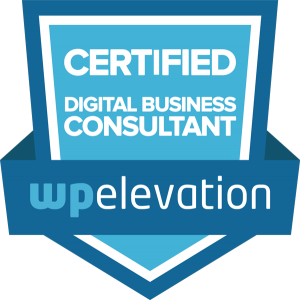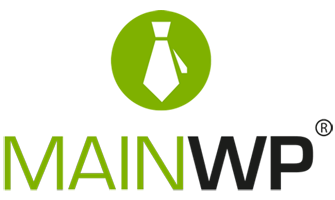How to streamline your WordPress webdevelopment process
Now that we all pay so much attention to the do’s and don’t’s within the Beaver Builder platform, some see to forget that WordPress webdevelopment is more than just making nice page. Brenda Malone started this interesting discussion on the Beaver Builder Facebook group. Some of our opinions and suggestions the get things done more streamlined.

 Brenda pointed out very clearly that there is so much ‘more’ than just making nice pages. To much for one blogpost anyhow. So let us start with making clear what we will not cover. We won’t go into hosting details. That is a world on its own, but determines speed, securiy, stability, backup and so much more around PHP and MySQL, the base on which WordPress runs. We will also not cover the business site of being a good (or even excellent) WordPress consultant. Look at WPElevation if you are interested in following a training to improve your business skills in that area.
Brenda pointed out very clearly that there is so much ‘more’ than just making nice pages. To much for one blogpost anyhow. So let us start with making clear what we will not cover. We won’t go into hosting details. That is a world on its own, but determines speed, securiy, stability, backup and so much more around PHP and MySQL, the base on which WordPress runs. We will also not cover the business site of being a good (or even excellent) WordPress consultant. Look at WPElevation if you are interested in following a training to improve your business skills in that area.
Just a little piece of the ‘SO much MORE’ ‘rant’ from Brenda Malone
One theme framework for all?
 We finally learned to choose just one framework which should fit all customer requirements. That was Genesis and Dynamik Website Builder (childtheme) on top of it. With that combination we though we could build everything any customer would ask. But we were wrong after the arrival of pagebuilders. Pagebuilders learned us our weaknesses in being designers. We were and are not, we are developers. We look for the optimum in automating the workflow and cared less about beautiness. We were more into speed, security and efficiency. The arrival of Beaver Builder (both theme and plugin) learned us also to focus (at least more) on beautiness. And yes, Beaver Builder (with a couple of add-ons) boosted that level of our skills by using templates with all various modules.
We finally learned to choose just one framework which should fit all customer requirements. That was Genesis and Dynamik Website Builder (childtheme) on top of it. With that combination we though we could build everything any customer would ask. But we were wrong after the arrival of pagebuilders. Pagebuilders learned us our weaknesses in being designers. We were and are not, we are developers. We look for the optimum in automating the workflow and cared less about beautiness. We were more into speed, security and efficiency. The arrival of Beaver Builder (both theme and plugin) learned us also to focus (at least more) on beautiness. And yes, Beaver Builder (with a couple of add-ons) boosted that level of our skills by using templates with all various modules.
Have a look at the interview with David Waumsley on some parts of our ‘theme struggle’
We were confused, we thought we had everything within our skills with Genesis/Dynamik. But we were wrong. We learned one thing to get a smoothly transition from Genesis to Beaver Builder. In the years we learned a lot about childthems, we learned a lot about hooks (actions and filters) and we became better in PHP and CSS. So we know what to look for at the moment we made our move to Beaver Builder. We knew to ask the right questions to decide to go to Beaver Builder or not. And yes, we knew how to look at the Beaver Builder plugin (and its add-ons) and how it could prevent us a couple of plugins used in our Genesis/Dynamik combination.
Becoming a member of the three major Facebook groups around Beaver Beaver speeded up the transition enormously
Streamline the installation of plugins
 Streamlining the use of plugins is a huge task. It is very tempting to just pick one for everything you think you need. We have seen many sites with 30+ plugins, non-updated WordPress core and at least 50% of outdated plugins. With the arrival of Beaver Builder we started to investigate which plugins would not be needed anymore after installing the BB plugin. Among them we could skip any complex pricing table plugin, almost any slider plugin, any tab plugin, any FAQ list plugin and many more. That saved us a lot of manual plugin installs. With WPCore we automated the installation and updating of the rest of needed plugins devided for various application needs of our customers.
Streamlining the use of plugins is a huge task. It is very tempting to just pick one for everything you think you need. We have seen many sites with 30+ plugins, non-updated WordPress core and at least 50% of outdated plugins. With the arrival of Beaver Builder we started to investigate which plugins would not be needed anymore after installing the BB plugin. Among them we could skip any complex pricing table plugin, almost any slider plugin, any tab plugin, any FAQ list plugin and many more. That saved us a lot of manual plugin installs. With WPCore we automated the installation and updating of the rest of needed plugins devided for various application needs of our customers.
Installing a pagebuilder is in no way a garentee to create a successful website
Automated workflow
 So for every project we start with automating as much as possible the installation of the tools we need for the requested web application for our customer. We are not there yet. Many small things still require manual work. Like protecting wp-content and wp-includes folders and reconfiguring wp-config.php. We do use GenerateWP for some more dedicated tasks to automate the generation of code, for example for creating custom post types without the need to use a plugin.
So for every project we start with automating as much as possible the installation of the tools we need for the requested web application for our customer. We are not there yet. Many small things still require manual work. Like protecting wp-content and wp-includes folders and reconfiguring wp-config.php. We do use GenerateWP for some more dedicated tasks to automate the generation of code, for example for creating custom post types without the need to use a plugin.
 We don’t use the Sucuri plugin for each individual site to let the plugin protect the folders. We do use MainWP to manage all updates for the WordPress core, plugins and theme for all sites we built with a maintenance contract. MainWP has a Sucuri add-on, in that way we can centralize sucurity scans for all sites from one easy to use dashboard. Also SSL will bring up some extra hosting related subjects, which we will not cover here, but will become more important, even for non-transactional websites.
We don’t use the Sucuri plugin for each individual site to let the plugin protect the folders. We do use MainWP to manage all updates for the WordPress core, plugins and theme for all sites we built with a maintenance contract. MainWP has a Sucuri add-on, in that way we can centralize sucurity scans for all sites from one easy to use dashboard. Also SSL will bring up some extra hosting related subjects, which we will not cover here, but will become more important, even for non-transactional websites.
So much more
We just only covered some aspects on our roadmap to automate parts of our workflow and to streamline the WordPress webdevelopment process. We hope we made clear that the arrival of ‘just’ a pagebuilder plugin is only a small part of developing the requested webapplication for a customer.
The customers identity is not just copy/paste and using a prebuild template
And we do agree with Brenda Malone that the arrival of pagebuilders might give starters in the WordPress playing field the wrong impression that ‘everything’ is easy just because of pagebuilders could create some fancy looking pages.



